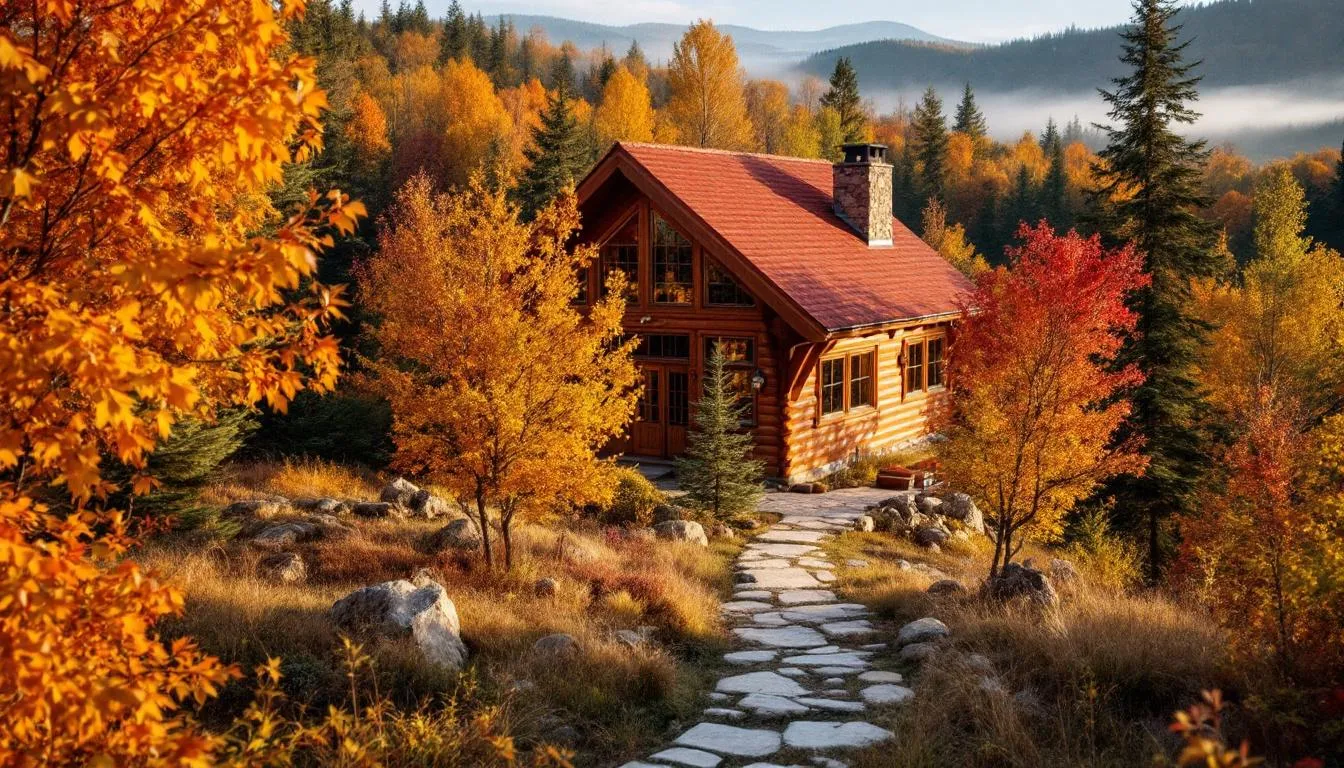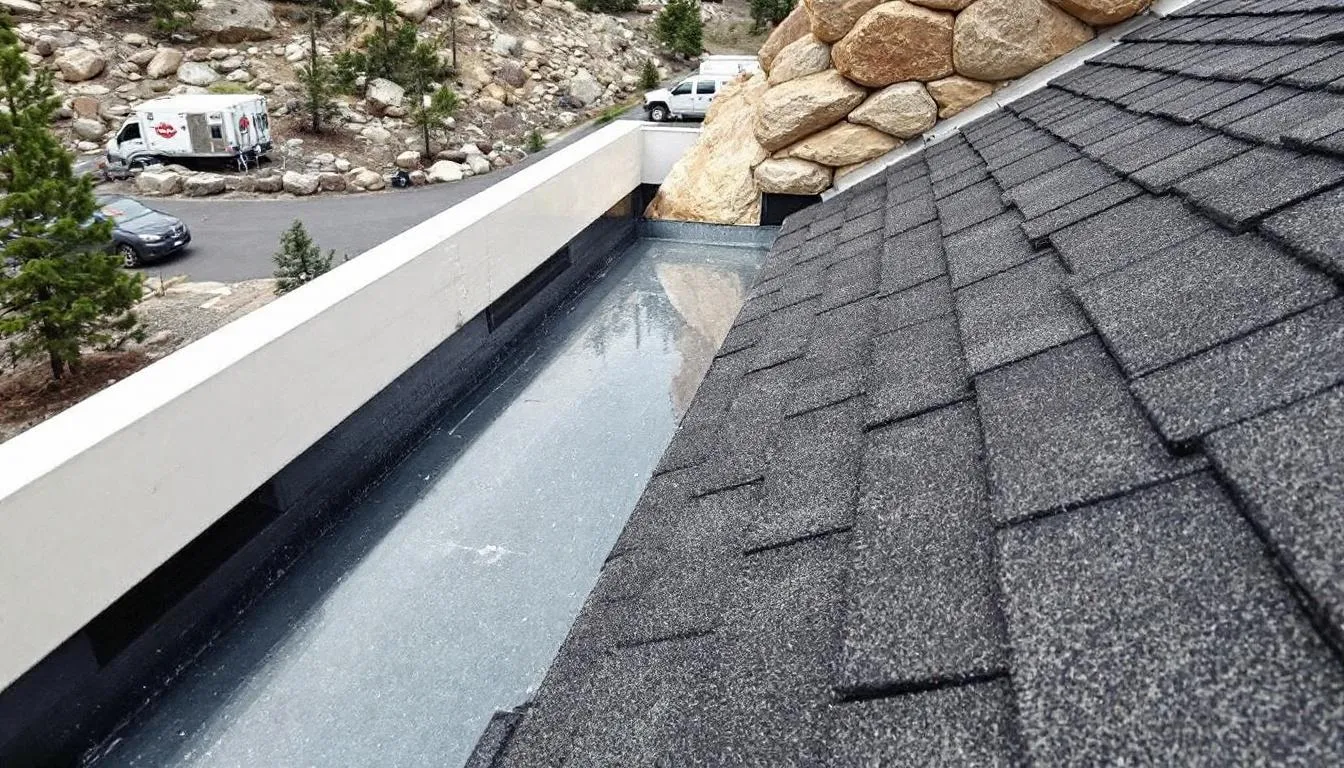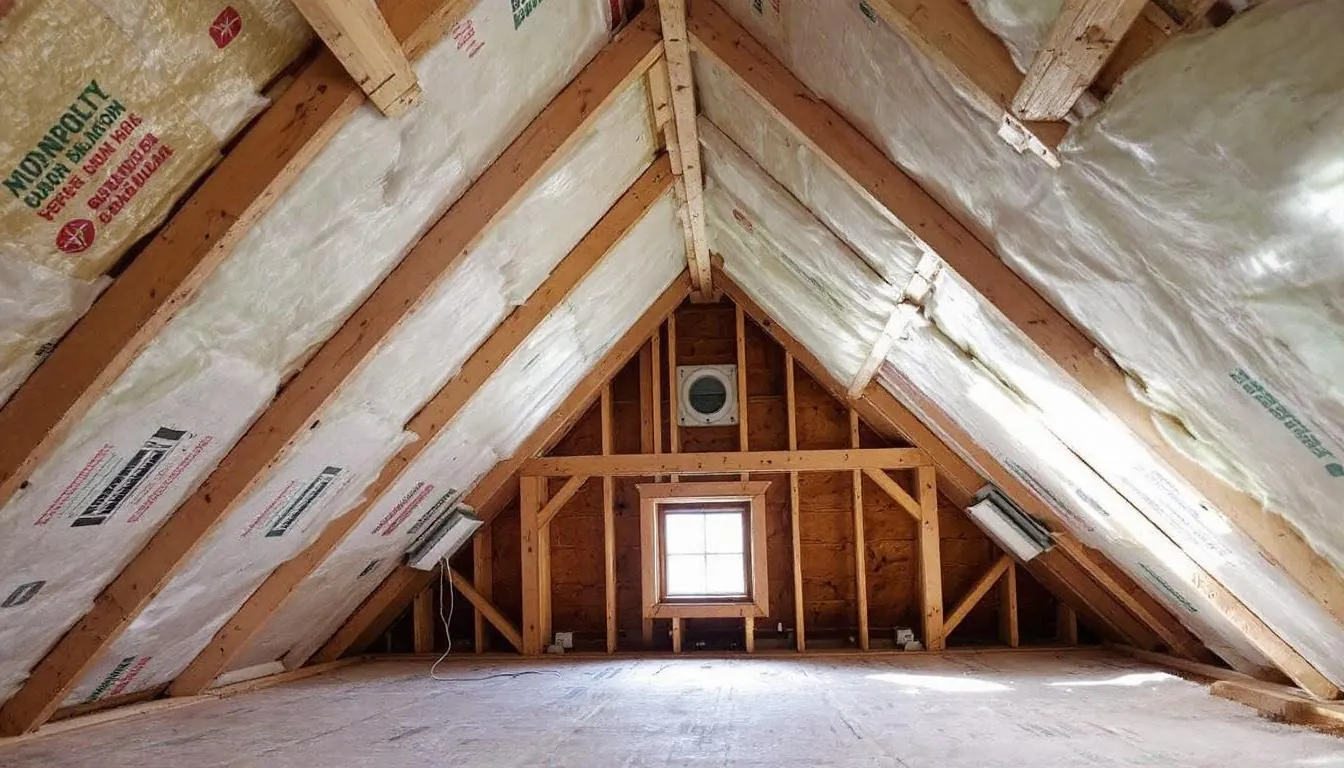Fall Roof Inspection Checklist for Mountain and Valley Homes in Utah

When autumn arrives in mountain and valley regions of Utah, homeowners face a critical window of opportunity. The changing seasons bring not just beautiful foliage, but also the urgent need to prepare roofs for the harsh realities of winter weather. Unlike homes in milder climates, mountain and valley properties endure extreme environmental stresses that can transform minor issues into major disasters within a single season.
The roofing industry has long recognized that quality roofing in these challenging environments requires more than just a trade approach – it demands specialized knowledge and proactive maintenance. For homeowners in these regions, a comprehensive fall roof inspection checklist becomes the foundation of winter preparedness, protecting both their investment and their family’s safety.
Over thousands of mountain and valley homes, patterns emerge that reveal where problems typically develop and how early detection can prevent catastrophic failures. This isn’t just about routine inspections; it’s about understanding how elevation, weather patterns, and surrounding vegetation create unique challenges that standard maintenance approaches often miss.
For Utah homeowners, Reimagine Roofing offers a free inspection and free use of their fast quote tool, providing estimates in less than 24 hours. This service helps homeowners quickly spot issues and plan for necessary repairs, ensuring their roofs are ready for the demanding winter months ahead.
Why Fall Roof Inspections Are Critical for Mountain and Valley Properties
Mountain and valley homes face environmental stresses that would challenge even the most robust roofing materials. At higher elevations, UV exposure intensifies dramatically, causing asphalt shingles to become brittle and lose granules at accelerated rates. The dedication shines through in quality roofing systems designed for these conditions, but even the best materials require vigilant monitoring as winter approaches.

The freeze-thaw cycles common in mountain regions create a particularly destructive force. Water penetrates small cracks and gaps during warmer fall days, then expands as temperatures drop overnight, widening these openings and creating pathways for more substantial water intrusion. Valley locations face their own challenges, as they often trap moisture and debris, creating ideal conditions for biological growth and drainage complications.
Temperature fluctuations in fall serve as a stress test for roofing materials. Metal roofing expands and contracts with temperature changes, potentially loosening fasteners or creating gaps in panel seams. Tile roofs may experience thermal stress that causes cracking, while composite shingles can become increasingly brittle as temperatures drop, making them vulnerable to wind damage during winter storms.
Snow load preparation becomes critical during fall inspections. The structural integrity of the roof deck and supporting framework must be verified to handle anticipated winter precipitation. In some mountain areas, snow loads can exceed 40 pounds per square foot, making fall assessment of load-bearing capacity essential for preventing catastrophic collapse.
The rapid temperature changes characteristic of mountain and valley climates also affect the roof surface differently throughout a single day. South-facing slopes may experience significant heating during sunny fall days, followed by rapid cooling as shadows lengthen, creating thermal stress patterns that reveal weak points in roofing materials before winter weather arrives.
Essential Exterior Inspection Points
Roofing Materials Assessment
The foundation of any effective fall roof inspection begins with a thorough examination of the primary roofing materials. Each shingle demands individual attention during this process, as summer UV exposure at mountain elevations can cause damage that’s not immediately visible from ground level. Look for curling edges, missing granules, and hairline cracks that indicate the material is approaching the end of its protective capability.
Asphalt shingles show their age through granule loss, which appears as dark patches where the underlying mat becomes visible. These areas become vulnerable points where UV radiation and moisture can accelerate deterioration. Check gutters for granule accumulation – significant amounts of granules washing off during fall rains signal that shingle replacement should be prioritized before winter.
Metal roofing panels require specific attention to thermal expansion damage and fastener integrity. Walk the roof surface if safely possible, listening for loose panels that may have worked free from their mounting points during summer heat cycles. Inspect exposed fasteners for backing out or washer deterioration, as these represent immediate leak risks when winter precipitation arrives.
For homes with tile roofs common in some mountain resort areas, examine each tile for cracks or displacement. Cracked tiles over valleys and eaves can admit wind-driven snow, while shifted tiles may indicate structural movement or inadequate fastening. Pay special attention to ridge tiles, which face maximum wind exposure and thermal stress.
Test the flexibility of roofing materials where safely accessible. Shingles that crack when bent slightly indicate UV damage and brittleness that could lead to failure during winter wind events. This simple test can reveal materials that appear intact from a distance but have lost their protective qualities.
Flashing and Penetration Points
Flashing represents the most critical component in preventing water intrusion, yet it’s often the most overlooked during routine maintenance. Every penetration point through the roof surface creates a potential leak path, making thorough flashing inspection essential before winter weather arrives.
Chimney flashing requires the most detailed examination, as these installations typically involve multiple types of flashing working together. Inspect step flashing along the sides, apron flashing at the front and back, and counterflashing embedded in the masonry. Look for rust, gaps, or separation between different flashing components. Pay special attention to the area where counterflashing meets the chimney crown, as this joint often fails due to thermal movement and water infiltration.
Vent stack boots deserve careful scrutiny, as the rubber or plastic collars around plumbing vents deteriorate rapidly under UV exposure. Check for cracking, separation from the roofing surface, or hardening that indicates the boot needs replacement. A failed vent boot can allow significant water penetration directly into the house structure.
Skylight installations present complex flashing challenges, particularly in mountain environments where snow loading can stress the frame and surrounding materials. Examine the flashing around the entire perimeter, ensuring proper overlap and secure attachment. Test the weep holes designed to drain condensation, as blocked drainage can cause water backup under the roofing materials.
Satellite dish and antenna mounting points often create overlooked penetration risks. Verify that all mounting hardware remains secure and that sealants around mounting points haven’t cracked or separated. These installations face significant wind stress in mountain locations and can create substantial leaks if fasteners work loose.
Gutters and Drainage Systems
Effective drainage becomes absolutely critical in mountain and valley environments, where rapid snow melt and heavy precipitation can overwhelm inadequate systems. The debris removal process should begin with a complete cleanout of all accumulated organic matter, paying particular attention to pine needles and small twigs that can create stubborn blockages.
Start the gutter inspection by checking the overall slope and alignment. Gutters should maintain consistent pitch toward downspouts, with no standing water areas after test flows. Use a garden hose to test drainage capacity, watching for slow-draining sections that indicate partial blockages or improper slope.
Examine gutter brackets and hangers for looseness caused by thermal expansion, ice loading, and wind stress. Mountain environments subject gutters to extreme forces, and loose attachments can lead to complete gutter failure during heavy snow or ice events. Pay special attention to fascia boards behind gutter attachments, as water damage here can compromise the structural support for the entire gutter system.
Downspout connections require verification that water exits well away from the foundation. In mountain and valley settings, improper drainage can cause foundation undermining, basement flooding, and ice formation near building entrances. Extend downspouts with splash blocks or underground drainage where necessary to direct water away from structures.
Consider the installation of gutter guards in areas with heavy tree coverage, particularly where pine needles create recurring blockage problems. While guards require initial investment, they dramatically reduce maintenance requirements and improve system reliability during critical winter months.
Ridge Lines and High-Wind Exposure Areas
Ridge lines face the most severe environmental stresses on any roof, making them priority areas during fall roof inspection checklist implementation. These elevated areas experience maximum wind uplift forces, temperature extremes, and UV exposure, creating conditions where failures often begin.
Ridge cap shingles deserve individual examination, as wind uplift in mountain locations can gradually work these critical components loose. Check for lifted edges, missing fasteners, or granule loss that indicates deterioration. Pay special attention to the mechanical fastening, as ridge caps rely entirely on proper attachment to remain effective.
Wind-facing slopes require systematic inspection for loose or damaged shingles from summer storm exposure. Mountain thunderstorms can generate extreme wind speeds that stress roofing materials beyond their design limits. Look for shingles with lifted corners, torn tabs, or exposed nail heads that indicate wind damage requiring repair before winter conditions arrive.
Ridge vents need verification of secure attachment and proper mesh screening to prevent wildlife intrusion while maintaining ventilation function. Examine the connection between ridge vent sections, ensuring weather sealing remains intact. Damaged or improperly installed ridge vents can become entry points for wind-driven snow and rain.
Document any areas where underlayment becomes visible, as this indicates surface material failure that compromises weather protection. Exposed underlayment deteriorates rapidly under UV exposure and provides minimal protection against wind-driven precipitation common in mountain storms.
Areas around dormers, cupolas, and other architectural features that interrupt ridge lines create complex flashing details requiring careful inspection. These intersections often develop problems due to thermal movement and require professional evaluation if issues are detected.
Valley and Low-Slope Problem Areas
Valleys represent critical drainage channels that must function flawlessly to prevent water backup and structural damage. In mountain environments, valleys channel significant snow melt and precipitation volumes, making proper function essential for roof system integrity.
Clear all debris accumulation from valley channels, paying particular attention to organic matter that can decompose and create acidic conditions damaging to valley flashing materials. Pine needles, leaves, and small branches can create dams that cause water backup under shingles during heavy precipitation or rapid snow melt events.

Valley flashing inspection should verify proper overlap relationships and secure attachment to the roof deck. Look for signs of standing water that indicate drainage problems or flashing damage. Any rust or corrosion on metal valley flashing indicates immediate replacement needs, as compromised valley flashing can cause extensive water damage throughout the roof system.
Examine areas where moss or algae growth appears in shaded valleys that retain moisture. While biological growth may seem cosmetic, it can trap moisture against roofing materials and accelerate deterioration. Remove growth carefully to avoid damaging underlying materials, and consider treatments to prevent regrowth.
Valley snow guards require inspection where installed to prevent snow avalanche damage to gutters and landscaping below. Verify that guards remain securely attached and positioned to control snow release without creating ice dam conditions. Improperly installed or damaged snow guards can create more problems than they solve.
Check for proper shingle installation in valley areas, ensuring that shingles don’t extend too far into the valley channel and restrict water flow. Valley installation requires specific techniques that differ from field installation, and improper methods can create chronic drainage problems.
Structural and Safety Components
Structural assessment during fall inspections focuses on the roof’s ability to handle anticipated winter loads while maintaining safety for occupants and inspection personnel. This evaluation requires both visual inspection and understanding of local building codes and snow load requirements.
Load-bearing capacity assessment begins with examining the roof deck through accessible attic areas. Look for sagging between rafters, which can indicate inadequate decking thickness or deterioration from moisture exposure. Any visible deflection suggests structural compromise requiring immediate professional evaluation.
Soffit and fascia boards require careful examination for rot, pest damage, or loose sections that could compromise gutter support or allow wildlife access. Mountain environments expose these components to extreme moisture variations, and failure can affect both structural integrity and building envelope performance.
Check for any structural deflection visible from ground observation, particularly along ridge lines or in valley areas where loads concentrate. Document any areas where the roof surface appears wavy or uneven, as these may indicate underlying structural problems requiring professional assessment.
Safety anchors and walkway systems installed for maintenance access need verification of secure attachment and compliance with current safety standards. These systems become critical during winter maintenance and emergency repairs when working conditions are most hazardous.
Examine roof-mounted equipment installations such as HVAC units, solar panels, or communication equipment for secure mounting and proper weatherproofing. Equipment failures during winter storms can cause significant structural damage and create safety hazards.
Interior Inspection Elements
Attic and Ceiling Assessment
Interior inspection provides critical diagnostic information that complements exterior findings and reveals problems not visible from outside. The attic space offers direct access to the underside of the roof deck and structural components, making it an essential part of comprehensive inspection protocols.
Water stains on ceiling surfaces indicate active or previous leaks requiring immediate attention. Map stain locations and correlate them with exterior inspection findings to identify leak sources. Fresh stains suggest ongoing problems, while old stains may indicate resolved issues that should be monitored for recurrence.
Attic insulation requires examination for moisture damage, mold growth, or pest contamination that can indicate ventilation problems or water intrusion. Wet or compressed insulation loses effectiveness and can harbor biological growth that affects indoor air quality. Check insulation depth to ensure adequate R-value for local climate requirements.

Examine roof decking from below for dark spots, staining, or soft spots that indicate water penetration or rot development. Use a flashlight to illuminate areas around penetrations, valleys, and eaves where problems commonly develop. Any soft spots in decking materials indicate structural compromise requiring immediate attention.
Look for daylight visible through the roof assembly, which indicates gaps or holes that allow air and moisture infiltration. While small amounts of light around ridge vents may be normal, significant light penetration suggests missing or damaged materials requiring repair.
Check for proper air sealing around penetrations such as chimneys, vent stacks, and electrical penetrations. Poor air sealing allows warm, moist air to escape into the attic space, contributing to ice dam formation and energy loss during heating season.
Ventilation System Evaluation
Proper ventilation becomes critical in mountain climates where temperature differentials between interior and exterior environments can be extreme. Balanced airflow prevents moisture accumulation and ice dam formation while maintaining energy efficiency.
Soffit vents require verification that they remain clear of insulation blockages and debris accumulation. These intake vents provide the foundation for effective attic ventilation, and blockages can completely disrupt airflow patterns. Remove any insulation or debris blocking vent openings.
Ridge and gable vents need inspection for proper function and wildlife exclusion screening. Measure airflow at various vent locations to ensure balanced intake and exhaust. Inadequate exhaust ventilation can cause moisture accumulation and ice dam formation during winter months.
Bathroom and kitchen exhaust vents require verification of proper exterior termination rather than discharge into attic spaces. Improper exhaust routing can introduce significant moisture into attic areas, creating ideal conditions for mold growth and structural deterioration.
Attic fans and thermostat controls need testing to ensure proper operation during winter conditions. These systems help maintain proper attic temperatures and moisture levels but require proper calibration for seasonal conditions.
Calculate net free ventilation area to ensure compliance with building codes and manufacturer requirements. Inadequate ventilation can void warranty coverage and create conditions leading to ice dam formation and moisture problems.
Get Winter-Ready with Reimagine Roofing
Don’t let hidden issues in your Utah mountain or valley home turn into costly winter emergencies. Here’s how we help:
-
Free Fall Roof Inspection – Identify vulnerabilities before winter storms hit.
-
Fast Quote Tool – Get an accurate repair or replacement estimate in less than 24 hours.
-
Specialized Expertise – We understand the extreme snow loads, freeze-thaw cycles, and drainage challenges unique to Utah’s mountains and valleys.
-
Tailored Solutions – From targeted repairs to complete roof upgrades, we’ve got you covered.
-
Local Experience – Our team knows how to prepare Utah homes for the harshest seasonal conditions.
✅ Schedule your free inspection today and head into winter confident your roof is ready for anything.

